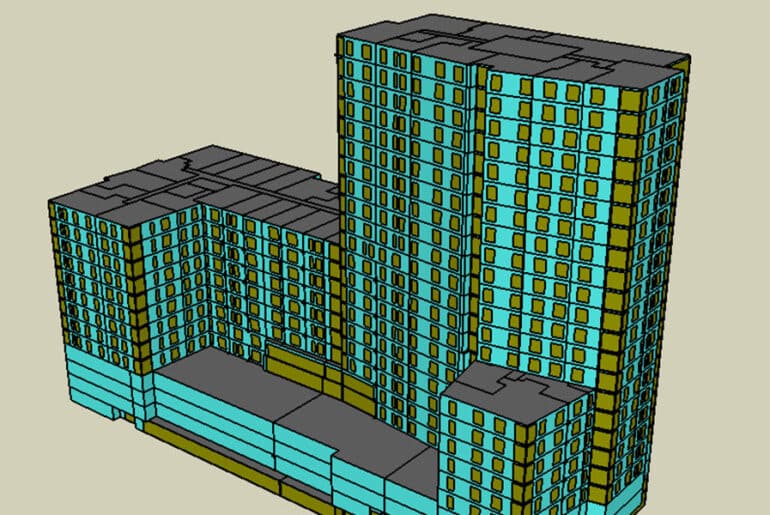Released April 2018, ASHRAE Standard 209 rethinks the way energy modeling should be used on projects. Shifting its role from compliance to optimization, the standard outlines how project teams can employ early energy modeling as a decision-making tool in design. Erik Kolderup, President of IBPSA-USA, the US affiliate of the International Building Performance Simulation Association, and one of the brains behind the standard, breaks down key components of the standard in his interview with one of Stok’s energy modelers and biggest Excel fans, Raghu Sunnam.
1. What is ASHRAE Standard 209: Energy Simulation-Aided Design for Buildings?
Well, besides the title, which is a bit of a mouthful, it’s a new process standard that outlines an optimal methodology for how to apply energy modeling to the building design process. The standard lays out specific energy modeling activities that should be performed in certain stages of the design of a building. There hasn’t been an industry standard for how to use energy modeling or what should be done in the process, and this standard begins to answer those questions.
2. What inspired the creation of this standard?
It all started with a frustrated group of energy modelers… I’m (mostly) kidding. Historically, energy modeling gets applied near the end of a project to achieve energy code compliance or LEED credits, but it doesn’t provide much benefit to the building’s performance in that scenario. Early stage modeling can be done with less effort and have greater impact by helping inform the design. These energy modelers had a desire to see building design projects take advantage of the full potential benefits of energy analysis, for which there currently isn’t a high level of awareness of across the industry.
3. How will the standard shape the role of energy modeling in the design process moving forward?
The standard departs from the typical modeling process in that it requires early energy modeling, so it’s fixing the issue of timing – showing how we can effectively use energy analysis early in project design. On one side, design professionals can use it as a framework for where energy modeling best fits into the project timeline when determining an appropriate scope of work for a proposal. On the other side, whoever is engaging with the energy modeler – likely an architect or building owner – can use the standard to understand good practice for what should be expected of consultants at certain points in the project. The hope is both sides of the project team use the standard as a framework to better understand the role of energy modeling on their project. It’s a step toward helping the industry better understand what energy modeling is and how to use it.
4. What can we determine from using energy modeling early in the design?
Big design decisions about building form, window area, number of stories, aspect ratio, and so on have a significant impact on the energy performance of the building. What we often find is if we do an energy analysis to optimize the form of the building, it results in lower heating and cooling loads, so we can save money on the HVAC system and pay for any of the extra investment for the envelope. In other words, we can take advantage of passive measures by doing some early stage analysis. Because Net Zero Energy buildings are an increasingly common goal, by modeling to minimize loads in the early design stage, you can also minimize the amount of renewable energy you need to install to reach that net zero goal. This early stage modeling is becoming even more important as we try to develop net zero buildings.
5. What are some of the key aspects and requirements of this standard for energy modelers to be aware of?
First, the standard requires that someone involved in the energy modeling have ASHRAE’s Building Energy Modeling Professional certification or an equivalent. Minimum requirements of the standard also include doing a climate analysis for the building’s location, doing some benchmarking, and participating in an energy design charette. For energy modeling, the standard defines 11 modeling cycles, of which you must complete two. One of them – the load reduction cycle – is mandatory and must be performed during schematic design (SD), so you have to look at the standard before SD in order to comply.
6. Which entities does ASHRAE envision mandating the use of ASHRAE Standard 209?
The requirements of the standard align well with the Integrative Design credit in LEED v4, so the committee is working to make compliance with the standard part of that credit. Beyond that, there’s been interest from a utility incentive program, as well as from institutions, local governments, and building owners in adopting the standard across their portfolios.
7. Where can people go to make comments or suggestions for the standard?
Get in touch with the committee chair, Jason Glazer, or me, and we will share it with the rest of the committee. The seed for this standard was planted on the BLDG-SIM email list, so posting questions and comments there is another forum for feedback.
8. How can people best get involved with ASHRAE, IBPSA, and standards development?
If you want to play a role in ASHRAE standards development, attend our events! ASHRAE has regular conferences and committee meetings, and IBPSA-USA has several local chapters as well as committees at the national level to get involved in.
9. So, we hear you live on a farm…
Ah yes. I teach a college class one quarter out of the year, and sometimes I’ll run into students years later and they don’t remember anything from the class except that I have goats and chickens. My partner and I live in Sacramento Valley on a 20-acre property with a small herd of dairy goats, a little flock of chickens, a dozen ducks, two geese, a couple donkeys, a dog, and a cat. It’s a real menagerie. So, when I’m not energy modeling, that’s what I’m doing. Contrary to popular belief, energy modelers aren’t always in front of their computer screens!
Want to learn more about the role of energy modeling as a decision-making tool? Reach out to our team to discuss how to optimize your project’s performance with energy modeling.



